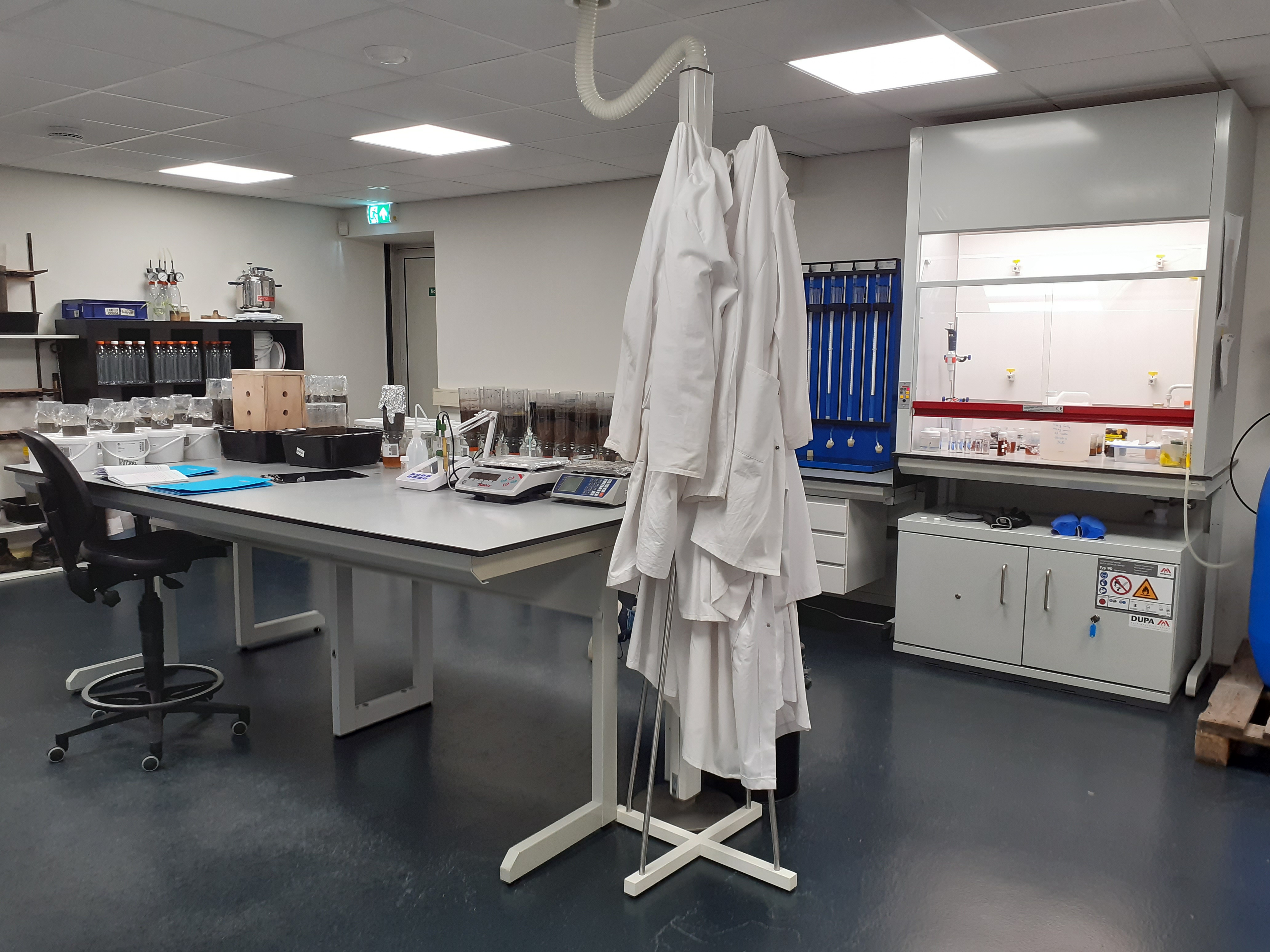Soil Stabilization
The BIS processes facilitate natural soil microbes to produce desirable effects through introducing natural amendments.
Most of our amendments are byproducts of the food industry. We use ‘waste’ as amendment, so reducing consumption of pristine materials. Some processes bind nitrogen in the subsoil. We only use indigenous, natural, soil microbes.
Cementation
Cementation is creation of a natural cement in the soil. This natural mineral forms by precipitation of calcium and carbonates. This mineral is stable (it frequently is the binding element in sandstone) and insoluble under regular soil conditions.
Groundwater Technology has a laboratory and testing facility to test the stabilization processes under site specific conditions. We plan our work based on a thorough assessment. Our lab technicians run multiple tests in parallel to customize the recipes. We can handle all combinations of conditions, saturated & unsaturated, aerobic, and anoxic, in batch tests of column experiments.


Gas formation
Anaerobic processes can be managed to produce nitrogen gas in the saturated zone. This gas will remain trapped in soil pores for a very long period. This gas acts as a kind of miniature airbags. It increases soil resistance to vibration or earthquake induced liquefaction. Liquefaction occurs when interstitial pressures (briefly) exceed formation pressure. Sand grains lose their coherence, and the soil subsides in the blink of an eye. Nitrogen gas is totally safe (the air that we breath consists for 80% of nitrogen gas.

Milieu-onderzoek
Wij engineeren de uitvoering van een project. Van bodemonderzoek tot detailontwerp van saneringsmaatregelen.

Pilotproeven in het lab
Wij beschikken over onderzoeksfaciliteiten om oplossingen te toetsen voordat we overgaan tot uitvoering in het veld.

Inpassing in infra en ontwikkeling
De bodemsanering staat niet op zichzelf maar maakt onderdeel uit van de ontwikkeling van een locatie of nieuwbouw.